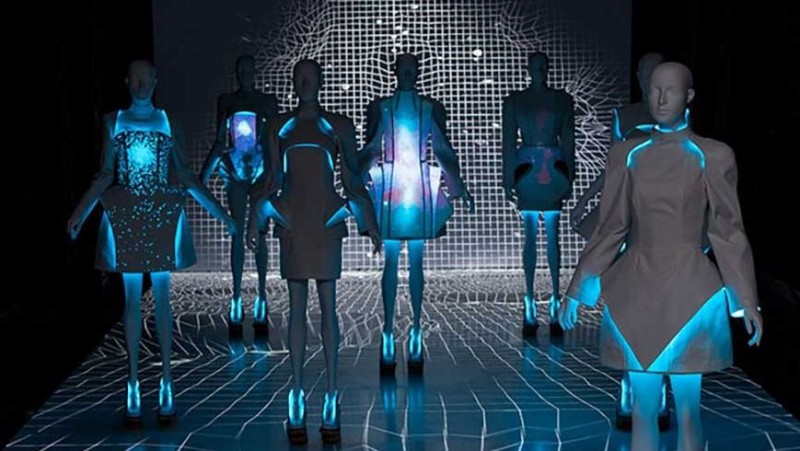
In recent years, sustainability has become a key focus in the fashion industry. Consumers are becoming more conscious of the environmental and social impact of their clothing choices. As a result, the fashion industry is undergoing a transformation towards more sustainable practices. Technology plays a crucial role in this shift, offering innovative solutions to address the environmental and ethical challenges faced by the fashion industry. This article explores the various ways in which technology is shaping sustainable fashion.
Introduction
The fashion industry has long been associated with environmental degradation and labor exploitation. However, with the advancement of technology, there is hope for a more sustainable future. Technology offers innovative solutions that can revolutionize the way fashion is produced, consumed, and disposed of. From the use of sustainable materials and fabrics to supply chain transparency and consumer education, technology is driving positive change in the fashion industry.
Sustainable Materials and Fabrics
One of the significant ways technology contributes to sustainable fashion is through the development of eco-friendly materials and fabrics. Traditional textile production heavily relies on non-renewable resources and chemicals that harm the environment. However, advancements in technology have led to the emergence of sustainable alternatives. For instance, fabric made from recycled plastic bottles, organic cotton, and innovative materials like Piñatex, derived from pineapple leaves, offer environmentally friendly options for fashion designers and consumers.
Digital Design and Prototyping
Digital design and prototyping tools are transforming the fashion industry by reducing waste and accelerating the design process. With the help of computer-aided design (CAD) software and 3D modeling, designers can visualize their creations without the need for physical samples. This not only saves time and resources but also allows for more precise and efficient designs. Additionally, virtual prototyping enables designers to experiment with different materials and styles, promoting innovation and reducing the environmental impact of the fashion design process.
Supply Chain Transparency
Transparency in the fashion supply chain has been a significant challenge for the industry. Consumers increasingly want to know where their clothes come from and how they are produced. Technology, such as blockchain, is playing a crucial role in enhancing supply chain transparency. By leveraging blockchain's decentralized and immutable nature, fashion brands can provide consumers with verifiable information about the origins of their garments, ensuring fair labor practices and sustainable sourcing.
Smart Production Systems
Smart production systems, including automation and artificial intelligence (AI), are revolutionizing manufacturing processes in the fashion industry. These technologies optimize production efficiency, reduce waste, and enable customization. AI-powered algorithms can analyze data to forecast demand accurately, leading to better inventory management and reduced overproduction. Moreover, automation can streamline production lines, minimizing errors and increasing productivity while minimizing the environmental impact.
Consumer Engagement and Education
Technology facilitates direct communication between fashion brands and consumers, enabling greater engagement and education on sustainable practices. Social media platforms, websites, and mobile applications allow brands to share their sustainability initiatives and educate consumers about responsible fashion choices. Additionally, virtual reality (VR) and augmented reality (AR) experiences can provide immersive storytelling and showcase the environmental and social impact of different fashion products, empowering consumers to make informed decisions.
Closing the Loop: Recycling and Circular Economy
The fashion industry is notorious for its wastefulness, with a significant amount of clothing ending up in landfills each year. Technology is playing a vital role in promoting a circular economy by enabling efficient recycling and upcycling processes. Innovations such as textile recycling machines and chemical recycling techniques can transform textile waste into new fibers or materials. By closing the loop and reintroducing recycled materials into the production cycle, the fashion industry can significantly reduce its environmental footprint.
Future Trends in Technology and Sustainable Fashion
As technology continues to advance, several exciting trends are emerging in the intersection of technology and sustainable fashion. These include the development of biodegradable fabrics, the integration of wearable technology with sustainable materials, and the use of artificial intelligence for personalized sustainable fashion recommendations. The future holds immense potential for further collaboration between technology and sustainability, paving the way for a more eco-conscious and ethical fashion industry.
Conclusion
Technology is a driving force behind the transformation of the fashion industry towards sustainability. From sustainable materials and digital design to supply chain transparency and consumer engagement, technology offers innovative solutions that address the environmental and social challenges faced by the fashion industry. Embracing these technologies and adopting sustainable practices is crucial for creating a fashion industry that is both stylish and environmentally responsible.
Famous Indian Photographers and Photography
Facial freckles have reduced your beauty, so get glowing skin with this homemade face pack